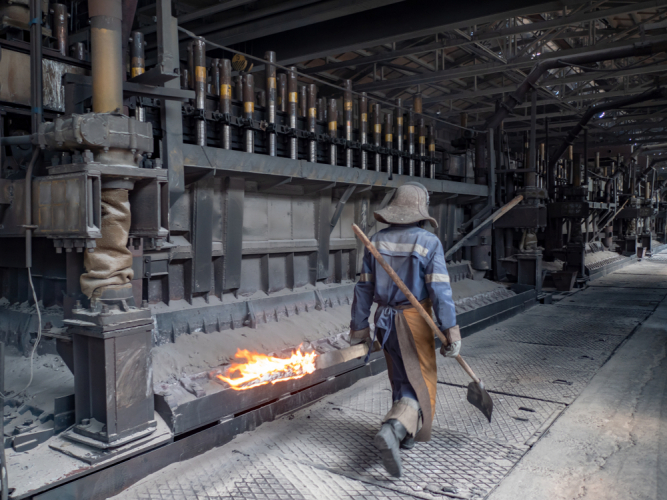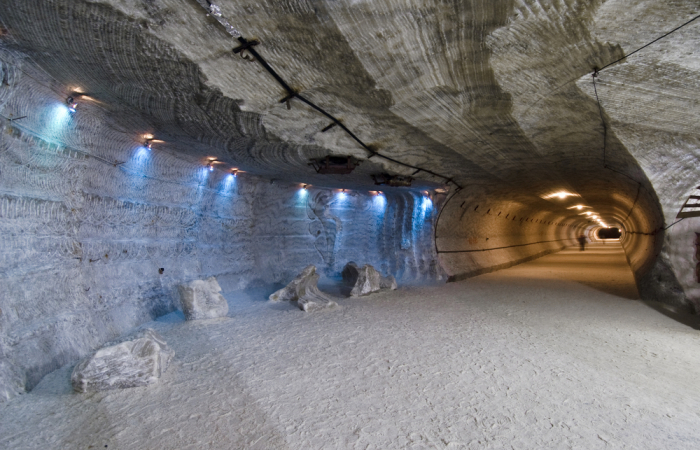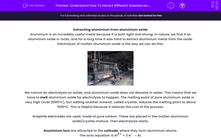Extracting aluminium from aluminium oxide
Aluminium is an incredibly useful metal because it is both light and strong. In nature, we find it as aluminium oxide in rocks, and for a long time it was hard to extract aluminium metal from the oxide.
Electrolysis of molten aluminium oxide is the way we can do this:

We cannot do electrolysis on solids, and aluminium oxide does not dissolve in water. This means that we have to melt aluminium oxide for electrolysis to happen. The melting point of pure aluminium oxide is very high (over 2000ºC), but adding another mineral, called cryolite, reduces the melting point to about 1000ºC. This is helpful because it reduces the cost of the process.
Graphite electrodes are used, made of pure carbon. These are placed in the molten aluminium oxide/cryolite mixture. Then electrolysis starts.
Aluminium ions are attracted to the cathode, where they form aluminium atoms.
The ionic equation is Al3+ + 3 e- → Al.
The molten metal sinks to the bottom of the vessel, where it falls out and is collected.
Oxide anions are attracted to the anode, where they form oxygen.
The ionic equation is 2O2- → O2 + 4 e-.
The oxygen reacts with the carbon electrodes, making carbon dioxide. This gradually destroys the electrodes, so they have to be regularly replaced.
Electrolysis of aluminium oxide is expensive because of the cost of heating the substance, and also due to the cost of the electricity needed for the process. This makes aluminium expensive, which is why it is so important to recycle it.
Extracting chlorine from sodium chloride
Chlorine is also a very useful element. It is used for cleaning, as a disinfectant and in bleach. Chlorine is added to water, such as in swimming pools, to kill bacteria. Some plastics (especially PVC) also need chlorine as an ingredient. Our main source of chlorine is sodium chloride.
We use electrolysis to get chlorine out of sodium chloride.
Our first task is to find sodium chloride. Although there is some in sea water, it is better to find layers of sodium chloride buried underground in mines like this:

The easiest way to bring sodium chloride to the surface is to pump fresh water into the mine. Sodium chloride will dissolve in the water, so salty water will be pumped back to the surface. This gives us a solution which we can use for electrolysis.
The ions in the salt water electrolyte are Na+, Cl-, H+ and OH-. Sodium and hydrogen ions will be attracted to the cathode, and chloride and hydroxide will be attracted to the anode.
At the cathode, hydrogen ions are turned into hydrogen atoms: 2H+ + 2 e- → H2. Sodium ions stay in the solution as ions.
At the anode, chloride ions are turned into chlorine atoms: 2Cl- → Cl2 + 2 e-. Hydroxide ions stay in the solution.
Electrolysis of sodium chloride is much cheaper than electrolysis of aluminium oxide. We can make the liquid electrolyte by dissolving salt in water, which doesn't need energy - unlike melting aluminium oxide.
Now it's time for some questions.








